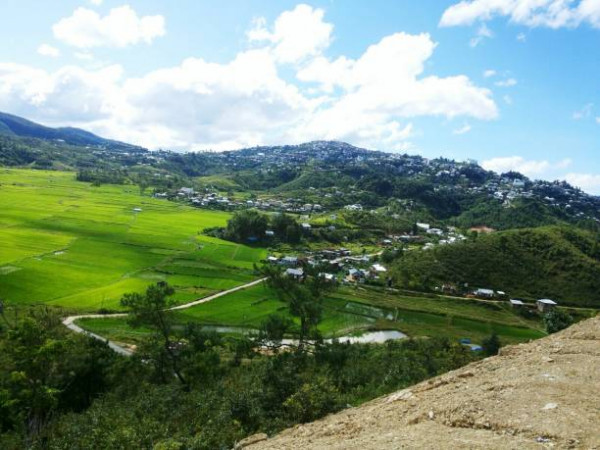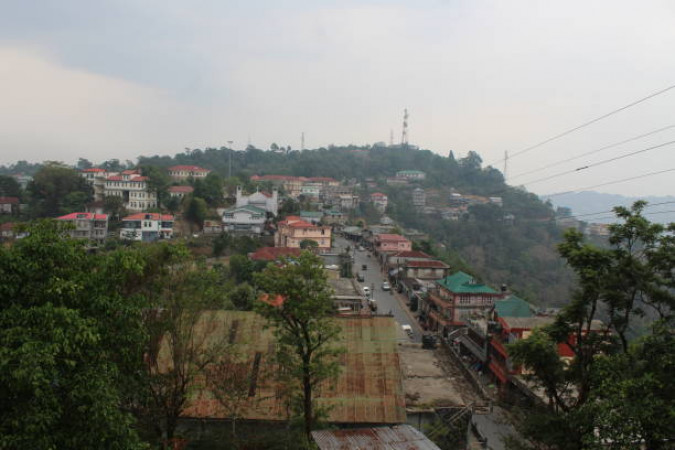Mamit Travel Guide
Mamit, a quaint town nestled in the northeastern state of Mizoram, India, is a hidden gem waiting to be explored. With a rich history dating back to ancient times and a unique geography surrounded by lush greenery and rolling hills, Mamit offers a cultural experience like no other. The town is famous for its vibrant festivals, traditional handicrafts, and warm hospitality, making it a must-visit destination for travelers seeking an offbeat adventure.Top Attractions in Mamit
- Palak Wildlife Sanctuary
- Dampa Tiger Reserve
- Vangchhia
- Kawtchhuah Ropui
- Pukzing Cave
Mamit is Famous for
Its untouched natural beauty and diverse wildlife.Top Attractions in Mamit
- Explore the Palak Wildlife Sanctuary
- Spot rare species at the Dampa Tiger Reserve
- Visit the ancient archaeological site of Vangchhia
- Hike to the stunning Kawtchhuah Ropui viewpoint
- Discover the hidden Pukzing Cave
What's Great about Travelling to Mamit?
- Nature lovers and wildlife enthusiasts will be in paradise - Perfect for offbeat travelers looking for an authentic experience - Rich cultural heritage and warm local hospitalityWhat's Not So Great about Travelling to Mamit?
- Limited tourist infrastructure - Remote location may not be suitable for luxury travelers - Limited dining and accommodation optionsTravel Tips for Mamit
- Obtain necessary permits for visiting wildlife reserves
- Carry sufficient cash as ATMs may be scarce
- Respect local customs and traditions
Important Mamit trip information
- Ideal Duration: 3-4 days
- Best Time to Visit: October to March
- Nearby Airports and Railway Stations: Lengpui Airport (90 km) and Bairabi Railway Station (35 km)
Top 6 Places to visit in Mamit
FAQ's on Mamit
Q1: What is the best time to visit Mamit?
Mamit is best visited during the dry season from November to March when the weather is pleasant for outdoor activities and sightseeing. This period also coincides with various festivals and cultural events, offering a vibrant experience for tourists. Avoid the monsoon season from June to September due to heavy rainfall that may disrupt travel plans.
Q2: Do I need a visa to travel to Mamit?
Travelers to Mamit typically require a visa for entry. However, some nationalities may be eligible for visa exemptions or visa on arrival. It is advisable to check the specific visa requirements based on your nationality and intended duration of stay before traveling to Mamit.
Q3: What are the must-visit attractions in Mamit?
Mamit boasts stunning natural beauty with attractions like the Dampa Tiger Reserve, Palak Dil (Palak Lake), and the picturesque Vantawng Waterfall. Explore the rich cultural heritage at historic sites such as Zote Village and Khawbung Village to experience the local way of life.
Q4: Is Mamit a safe place to travel?
Mamit is generally a safe destination for travelers. However, like any other place, it is recommended to stay cautious, especially in crowded areas and at night. Avoid isolated areas and be mindful of your belongings to ensure a safe and enjoyable trip.
Q5: What is the local currency in Mamit and can I use credit cards?
The local currency in Mamit is the Indian Rupee (INR). While credit cards are accepted in some hotels and larger establishments, it is advisable to carry cash for smaller vendors and local markets. ATMs are available in major towns for convenient cash withdrawals.
Q6: What is the local cuisine like in Mamit?
The cuisine in Mamit is a delightful blend of traditional Mizo dishes showcasing flavors of bamboo shoots, local herbs, and smoked meats. Must-try dishes include Bai, Vawksa Rep, and Koat Pitha. Vegetarian options are also available, and visitors can savor the unique taste of local teas and rice beers.
Q7: What transportation options are available in Mamit?
Transportation in Mamit includes public buses, shared taxis, and rental cars for exploring the region. Hiring a local guide is recommended for remote areas. Additionally, adventurous travelers can opt for trekking and hiking to access scenic locations not reachable by regular transport.
Q8: Are there any cultural norms or etiquette I should be aware of when visiting Mamit?
When visiting Mamit, it is important to respect the local customs and traditions of the Mizo people. Modest clothing is appreciated, and it is customary to remove shoes before entering homes or religious sites. Greetings are often exchanged with a smile and a nod, and it is polite to ask for permission before taking photographs of individuals.
Q9: I am a travel agent. How can I buy travel leads of Mamit?
Register yourself as a travel agent at agents.tripclap.com and then you can buy travel leads to Mamit once your account is approved. For more details contact our support team at +91-8069186564 or support@tripclap.com


